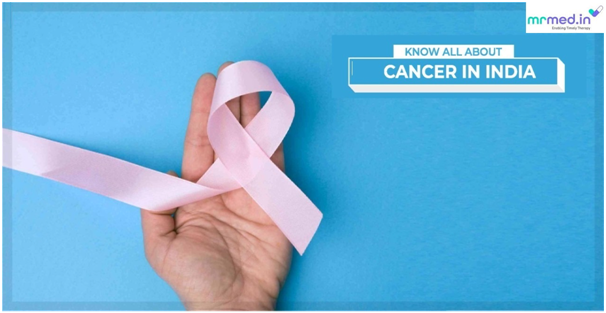Understanding the Landscape of Cancer in India: Types, Causes, and Survival Rates
Cancer is a major public health concern around the world. It is defined as an uncontrolled growth and abnormal production of cells in the body, which divide uncontrollably and spread to other body parts. India is witnessing an increase in the prevalence of cancer, with various types of tumors threatening the population. This article explores the different types of cancer commonly found in India, decoding their incidence rate, examining their potential causes, and analyzing the survival rates associated with each type of cancer. Between 2000 and 2019, India witnessed 12.85 million deaths due to 23 major types of cancer, which is huge and alarming. The most lethal among these were cancers of the mouth and oropharynx (15.6{7abe0a0f5d8f2b2bf820b6903546a7eb576a7f2eb77fdefff9ab7cd0d64b2a46}), stomach (10.6{7abe0a0f5d8f2b2bf820b6903546a7eb576a7f2eb77fdefff9ab7cd0d64b2a46}), lung (9.6{7abe0a0f5d8f2b2bf820b6903546a7eb576a7f2eb77fdefff9ab7cd0d64b2a46}), breast (9{7abe0a0f5d8f2b2bf820b6903546a7eb576a7f2eb77fdefff9ab7cd0d64b2a46}), and colorectal regions (8{7abe0a0f5d8f2b2bf820b6903546a7eb576a7f2eb77fdefff9ab7cd0d64b2a46}).
Types of Cancers in India:
Oral Cancer
Oral cancer ranks as the third most common cancer in India, impacting both men and women. The year 2020 saw a significant number of new cases, totaling 135,929. The primary factors contributing to the incidence of oral cancer are the use of tobacco products, such as smoking or chewing tobacco, excessive alcohol intake, and poor oral hygiene practices.
The five-year survival rate for people with oral cancer in India stands at approximately 60{7abe0a0f5d8f2b2bf820b6903546a7eb576a7f2eb77fdefff9ab7cd0d64b2a46}. However, the prognosis improves considerably with early detection. When oral cancer is detected in its initial stages (I or II), the five-year survival rate can increase dramatically, ranging from 70 to 90{7abe0a0f5d8f2b2bf820b6903546a7eb576a7f2eb77fdefff9ab7cd0d64b2a46}. This underscores the critical importance of early diagnosis and intervention in effectively managing and treating oral cancer.
Stomach Cancer
Stomach cancer poses a significant health concern, particularly prevalent in specific regions, affecting many individuals. In the Indian population, various factors contribute to its occurrence. A prominent cause is the Helicobacter pylori infection. Additionally, dietary habits like consuming spicy and preserved foods, tobacco and alcohol use, and genetic predispositions also play crucial roles in the development of stomach cancer. Stomach cancer survival rate in India depend on multiple aspects, including the stage at which diagnosis is made, the quality of healthcare available, and the treatment options chosen. These factors collectively influence the longevity and quality of life of those diagnosed with stomach cancer in India.
Lung Cancer
Lung cancer is a significant health concern, as highlighted by the GOBOCAN report, which recorded approximately 67,795 new cases in India in 2018 alone. The primary causes oflung cancer include smoking, exposure to secondhand smoke, and environmental pollution. These factors significantly raise the risk of developing lung cancer. However, the survival prospects in India are relatively low, with only about 17.8{7abe0a0f5d8f2b2bf820b6903546a7eb576a7f2eb77fdefff9ab7cd0d64b2a46} of patients surviving for at least five years post-diagnosis. This low survival rate is often attributed to the late detection of the disease when it has already progressed to an advanced stage, making effective treatment more challenging.
Colorectal Cancer
Colorectal cancer is becoming a growing concern in India, as indicated by the 2020 Global Cancer Observatory (GLOBOCAN) data. The incidence of this cancer type is on the rise, with an annual increase ranging from 20{7abe0a0f5d8f2b2bf820b6903546a7eb576a7f2eb77fdefff9ab7cd0d64b2a46} to 124{7abe0a0f5d8f2b2bf820b6903546a7eb576a7f2eb77fdefff9ab7cd0d64b2a46} across various regions of India. The factors contributing to the development of colorectal cancer are multifaceted, including lifestyle elements such as diet and exercise habits, as well as genetic predispositions that may increase susceptibility. Despite this, early detection through screening can significantly enhance survival prospects. However, the reality in India is more serious, with the five-year survival rate for colorectal cancer being one of the lowest globally, falling below 40{7abe0a0f5d8f2b2bf820b6903546a7eb576a7f2eb77fdefff9ab7cd0d64b2a46}. This statistic underscores the critical need for improved awareness and early detection strategies in the country.
Breast Cancer
Breast cancer is the most prevalent cancer among Indian women, accounting for about 30{7abe0a0f5d8f2b2bf820b6903546a7eb576a7f2eb77fdefff9ab7cd0d64b2a46} of all cancer cases in women. The causes of breast cancer can include a range of factors, such as family history, hormonal changes, and lifestyle preferences, including diet and exercise habits. The survival rates according to the National Cancer Registry Program reports in India, about 66{7abe0a0f5d8f2b2bf820b6903546a7eb576a7f2eb77fdefff9ab7cd0d64b2a46} of women with breast cancer survive for at least five years following their diagnosis.
Cervical Cancer
Cervical cancer represents a significant health challenge for women in India, accounting for 27.7{7abe0a0f5d8f2b2bf820b6903546a7eb576a7f2eb77fdefff9ab7cd0d64b2a46} of all female cancer cases. The primary cause of this type of cancer is an infection with the human papillomavirus (HPV). Additionally, factors such as inadequate cancer screening and various socio-economic issues also contribute to the prevalence of cervical cancer in India. On a more positive note, the survival rate for women diagnosed with cervical cancer in India is relatively hopeful, with 60-70{7abe0a0f5d8f2b2bf820b6903546a7eb576a7f2eb77fdefff9ab7cd0d64b2a46} living for at least five years post-diagnosis. This underscores the importance of early detection and effective treatment in improving outcomes for women with cervical cancer.
Prostate Cancer
Prostate cancer is a significant health issue for men in India, with a notable incidence reported in 2020, where 41,532 new cases were identified. The development of prostate cancer is primarily associated with several key factors. Aging plays a considerable role, along with a family history of the disease, which can increase the likelihood of its occurrence. Hormonal changes also contribute significantly to the risk. When it comes to recovery prospects, men diagnosed with prostate cancer in India have a relatively optimistic outlook, with about 64{7abe0a0f5d8f2b2bf820b6903546a7eb576a7f2eb77fdefff9ab7cd0d64b2a46} having a chance of surviving for at least five years following their diagnosis. This statistic highlights the importance of early detection and effective treatment strategies in managing prostate cancer effectively.
Causes of Cancer in India:
- Lifestyle: Eating unhealthy foods, not exercising enough, and being overweight can lead to different types of cancer.
- Tobacco: Using tobacco, including smoking and tobacco that isn’t smoked, is a big reason for lung, mouth, and other cancers. In India, 42.4{7abe0a0f5d8f2b2bf820b6903546a7eb576a7f2eb77fdefff9ab7cd0d64b2a46} of men and 14.2{7abe0a0f5d8f2b2bf820b6903546a7eb576a7f2eb77fdefff9ab7cd0d64b2a46} of women use some kind of tobacco.
- Environment: Being around pollution, chemicals, and radiation can increase the risk of getting certain cancers.
- Genes: Family history matters. If your family has a history of breast or colorectal cancer, you might have a higher chance of getting these cancers.
- Infections: Certain infections, like the HPV virus, can lead to cervical cancer. This shows how important vaccines and preventive steps are.
Survival Rates in India:
Survival rates vary based on early detection, access to quality healthcare, and the type of cancer. Generally, cancers diagnosed at later stages have lower survival rates. The need for awareness, screening programs, and improved healthcare infrastructure is critical to enhancing survival rates across different cancers in India.
Conclusion:
To effectively navigate the cancer landscape in India, it’s essential to recognize the diverse types of cancers, understand their causes, and address the factors influencing survival rates. Key strategies for improving the health outcomes of the population include a strong emphasis on cancer prevention, early detection, and expanding access to quality healthcare. This comprehensive approach is vital for reducing the cancer burden and enhancing the well-being of individuals across the country.




